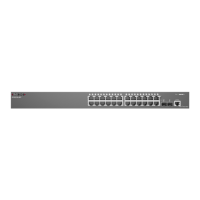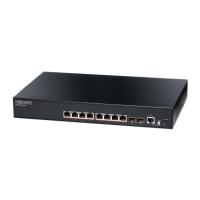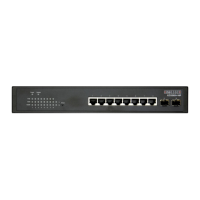Chapter 20
| ERPS Commands
– 493 –
Command Usage
◆
Configure one control VLAN for each ERPS ring. First create the VLAN to be used
as the control VLAN (vlan, page 460), add the ring ports for the east and west
interface as tagged members to this VLAN (switchport allowed vlan, page 463),
and then use the control-vlan command to add it to the ring.
◆
The following restrictions are recommended to avoid creating a loop in the
network or other problems which may occur under some situations:
■
The Control VLAN must not be configured as a Layer 3 interface (with an IP
address), a dynamic VLAN (with GVRP enabled), nor as a private VLAN.
■
In addition, only ring ports may be added to the Control VLAN. No other
ports can be members of this VLAN.
■
Also, the ring ports of the Control VLAN must be tagged.
◆
Once the ring has been activated with the enable command, the configuration
of the control VLAN cannot be modified. Use the no enable command to stop
the ERPS ring before making any configuration changes to the control VLAN.
Example
Console(config)#vlan database
Console(config-vlan)#vlan 2 name rdc media ethernet state active
Console(config-vlan)#exit
Console(config)#interface ethernet 1/12
Console(config-if)#switchport allowed vlan add 2 tagged
Console(config-if)#interface ethernet 1/11
Console(config-if)#switchport allowed vlan add 2 tagged
Console(config-if)#exit
Console(config)#erps domain rd1
Console(config-erps)#control-vlan 2
Console(config-erps)#
enable
This command activates the current ERPS ring. Use the
no
form to disable the
current ring.
Syntax
[
no
]
enable
Default Setting
Disabled
Command Mode
ERPS Configuration
Command Usage
◆
Before enabling a ring, the global ERPS function should be enabled with the
erps command, the east and west ring ports configured on each node with the

